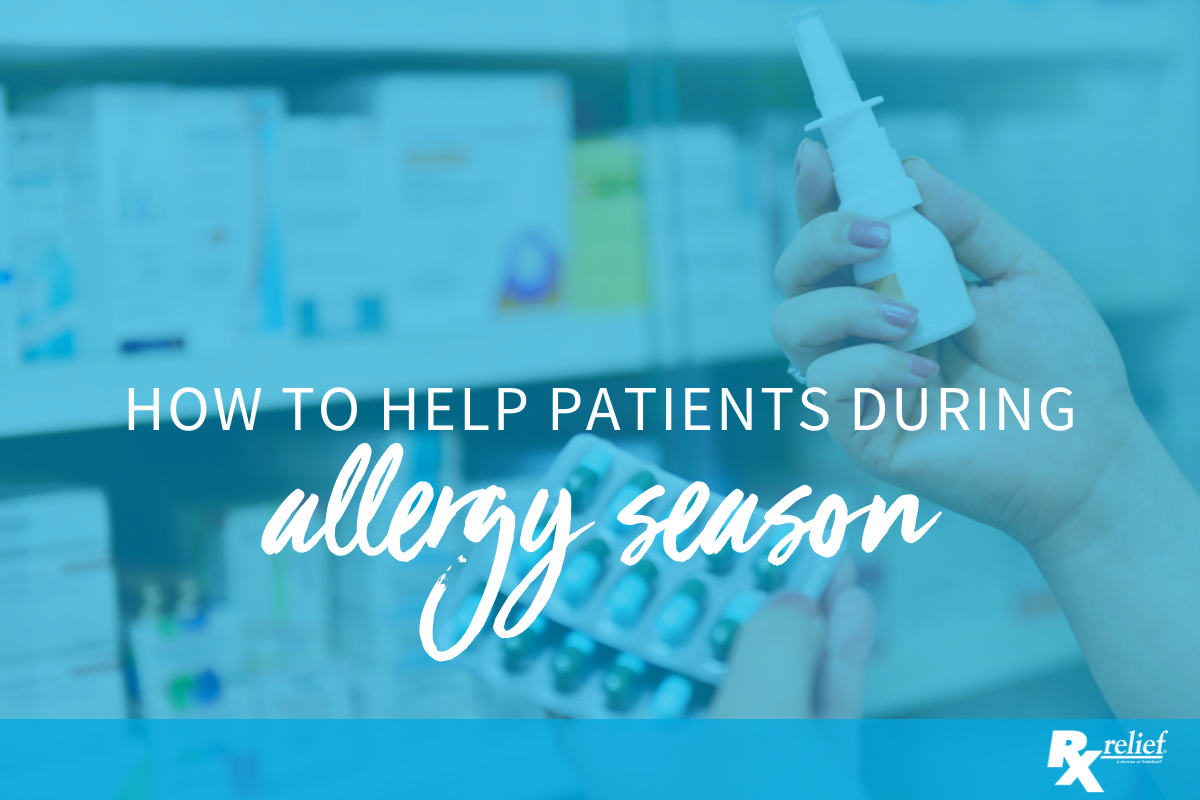Spring Has Sprung! 4 Ways to Help Your Patients Prep for Allergy Season

Spring is upon us, and that means the start of allergy season. Tree pollen makes its appearance usually in late March and April, while grass pollen arrives in May. Here are a few things you can do to help your patients prepare for allergy season.
1. Educate them about corticosteroids.
The most effective drugs for patients with allergies are corticosteroids. They are the most effective for people with seasonal allergic rhinitis because they work to reduce inflammation and lower the immune system’s activity.
Corticosteroids include such medications as budesonide, triamcinolone, and fluticasone. However, people need to have a little patience when using these drugs. They don’t provide instant relief. But that is what many people expect, and so they stop taking the medication when they don’t see any results. Or they will stop taking the corticosteroids when their condition begins to improve. Consequently, their symptoms return, according to pharmacists.
Allergists recommend patients begin taking intranasal corticosteroids at the start of allergy season or one week before.
Nasal corticosteroids work by reducing the inflammation of nasal passages, reducing congestion in the nose. The drugs come in different forms – as a spray, aerosol liquids, and powders. It can take as long as three weeks before the full effects of the drug are felt.
The most common side effects of corticosteroids are irritation in the nose or throat or dryness in the nose. They seldom have any significant side effects.
2. Educate patients about antihistamines and decongestants
Other alternatives to corticosteroids are antihistamines and decongestants. People often mistakenly assume that these drugs are interchangeable. They each perform different functions. Antihistamines work to curtail symptoms such as sneezing, itching, and runny nose. Decongestants work to alleviate nasal congestion.
People also need to be aware that decongestants raise blood pressure. Antihistamines have no effect on blood pressure. However, antihistamines also are not without side effects, the most prominent being drowsiness. The first-generation antihistamine diphenhydramine has a sleep-inducing solid effect. Second-generation antihistamines, however, have fewer side effects. These include drugs like loratadine and cetirizine.
An effective decongestant is a pseudoephedrine. But patients need to be aware that it acts as a stimulant and can interfere with sleep if taken later in the day.
3. Educate patients about using a saline solution
Another allergy treatment is rinsing the nostrils with a saline solution every day. These types of nasal sprays are simple solutions of sterilized water and salt.
They are sold in a squirt or pump bottle. With the saline solution, there is no danger of nasal congestion becoming chronic when the medication wears off, as with decongestants.
However, the relief it offers may not be very long-lasting, and so may be needed several times a day.
4. Counsel patients about avoiding allergens.
Another way of alleviating allergy symptoms is simply by limiting exposure to allergens. People can do this by staying indoors when the pollen count is high, keeping doors and windows closed. If you have to go outdoors, take a shower after returning indoors and change clothing to remove any pollen.
Find Your Next Opportunity
At Rx relief, we take a personal interest in each of our candidates. Our staff is passionate about what they do and works to find each person’s right job. Rx relief has received a number of awards for our service. Give Rx relief a call today.



